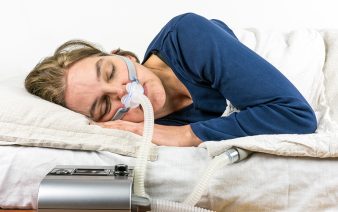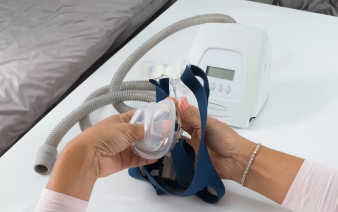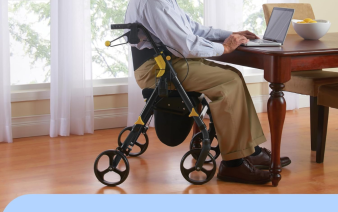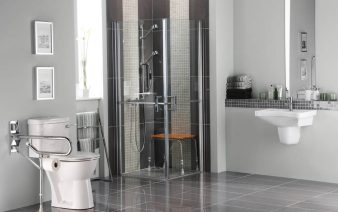-
By: admin
-
May 19, 2025
How to Choose the Right DME Products for Your Healthcare Needs
Introduction:
Durable Medical Equipment (DME) plays a critical role in providing healthcare solutions that improve quality of life, enhance mobility, and aid recovery for patients with various conditions. Whether you’re recovering from surgery, managing a chronic condition, or supporting a loved one with mobility challenges, choosing the right DME products is essential to ensuring comfort, safety, and independence.
With so many options available in the market, selecting the right DME can feel overwhelming. In this blog post, we’ll walk you through the key factors to consider when choosing DME products, helping you make informed decisions that align with your healthcare needs.
1. Assess Your Specific Healthcare Needs
Before selecting any DME product, it’s crucial to clearly understand your healthcare needs. The type of equipment required will depend on the nature of your condition, the level of mobility, and the type of care you need.
-
Mobility Aids: For those with limited mobility, items like walkers, canes, wheelchairs, or scooters are often necessary. If you need assistance moving around your home or community, assess whether you require a manual wheelchair or if an electric model is more suited to your needs.
-
Home Safety: If you’re at risk of falls or have difficulty with daily tasks like bathing or using the bathroom, equipment like grab bars, shower chairs, and toilet safety frames will help ensure safety and independence.
-
Respiratory Equipment: Individuals with chronic respiratory conditions like COPD or asthma may need products such as oxygen concentrators, CPAP machines, or nebulizers.
Consult with your healthcare provider to get a clearer picture of what equipment will support your treatment plan.
2. Understand the Different Types of DME Products
DME products come in many forms, each designed to serve a specific purpose. Understanding these categories can help you make a more informed decision:
-
Mobility Aids: Includes items like crutches, wheelchairs, scooters, walkers, and canes that assist with moving from one place to another.
-
Bathroom Aids: These are essential for individuals with mobility or balance issues. Shower chairs, commodes, grab bars, and toilet risers are common bathroom safety products.
-
Patient Monitoring Equipment: Devices like blood pressure monitors, pulse oximeters, and glucose meters help track vital health metrics for chronic condition management.
-
Respiratory Equipment: These include oxygen tanks, ventilators, and nebulizers, which are necessary for individuals with respiratory issues.
-
Assistive Devices: This category includes items like hearing aids, adaptive eating utensils, and dressing aids to support individuals with sensory impairments or reduced hand dexterity.
Understanding these categories helps narrow down what you specifically need based on your medical conditions.
3. Consider the Durability and Quality of the Product
When it comes to DME, durability is key. The equipment you choose should be built to last, especially since many DME products are intended for long-term use.
-
Material Quality: Check if the product is made of high-quality, durable materials. For instance, mobility aids like wheelchairs should be built from lightweight yet sturdy metals, and bathroom aids should be made of rust-resistant, durable materials to ensure longevity.
-
Warranty and Guarantees: Look for products that come with warranties or satisfaction guarantees. A product backed by a warranty provides peace of mind, knowing that it can be replaced or repaired if it malfunctions.
-
Brand Reputation: Choose products from reputable manufacturers that specialize in high-quality, tested DME products. Brands with a proven track record of reliability will ensure you’re getting the best possible equipment for your needs.
4. Evaluate Comfort and Ease of Use
Comfort and ease of use are essential considerations, especially for products that you or your loved ones will be using daily.
-
Ergonomics: Whether it’s a wheelchair or a cane, make sure the equipment is comfortable and ergonomically designed to fit your body. For example, a wheelchair should have adjustable seating and footrests, and mobility aids like walkers should have cushioned grips.
-
Adjustability: Many DME products offer adjustable features to accommodate users of various sizes and needs. For example, adjustable crutches or walkers allow for a personalized fit to ensure comfort.
-
Ease of Operation: For certain products, like oxygen concentrators or CPAP machines, consider how easy it is to operate. Intuitive controls, simple maintenance, and clear instructions are vital for ease of use.
5. Review Your Budget and Insurance Coverage
Healthcare equipment can be costly, so it’s important to weigh your budget against the types of DME you need.
-
Price: While some items may seem expensive initially, it’s worth considering the long-term benefits. Often, higher-quality equipment will save you money in the long run, as it lasts longer and requires fewer repairs.
-
Insurance Coverage: Check with your insurance provider to see what types of DME products are covered under your plan. Medicare, Medicaid, and private insurance often cover many types of DME, but it’s crucial to confirm which specific items and brands are eligible for reimbursement.
-
Financial Assistance: Some healthcare providers offer financial assistance programs or payment plans to help you afford DME equipment. Be sure to inquire about any available options to make purchasing more affordable.
6. Read Reviews and Ask for Recommendations
Before making a purchase, take the time to read product reviews and ask for recommendations from others who have used the same equipment.
-
Customer Reviews: Online reviews can provide valuable insights into the product’s quality, comfort, and ease of use. Look for reviews from individuals who have similar healthcare needs to get a better sense of how the product will work for you.
-
Healthcare Professional Recommendations: Your doctor or therapist may have experience with certain products and can suggest options that are best suited to your healthcare requirements. Ask for their professional input when selecting equipment.
7. Ensure Proper Fit and Sizing
Proper fit is particularly important when it comes to DME products. Whether it’s a wheelchair, braces, or prosthetics, getting the correct size is essential for effectiveness and comfort.
-
Wheelchairs and Scooters: Ensure that the seat width, armrest height, and footrest length are adjusted to your specific body measurements. A poorly fitted wheelchair can lead to discomfort or even exacerbate health issues like pressure sores.
-
Mobility Aids: Crutches, canes, and walkers need to be sized properly to ensure maximum stability and prevent unnecessary strain or injury.
8. Verify Safety Features
Safety is paramount when choosing DME products. Many healthcare products are designed to enhance safety, such as bed rails, grab bars, and shower chairs. Be sure to:
-
Check for Stability: Make sure that the equipment is stable and secure when in use. For example, ensure that grab bars are properly installed and can support your weight without shifting.
-
Anti-Slip Features: Look for anti-slip surfaces on mobility aids or bathroom equipment, such as non-slip mats for shower chairs or textured handles for canes.
-
Support and Guidance: Some DME products come with built-in safety features like pressure sensors or automatic alerts, which notify caregivers if something goes wrong.
Conclusion:
Choosing the right DME products is a crucial step in managing your health and ensuring a smooth and comfortable recovery process. By considering factors like your specific healthcare needs, the quality of the product, comfort, budget, and safety features, you can make an informed decision that will best support your health and independence.
Always consult with your healthcare provider for recommendations and make sure to carefully research options before purchasing. The right DME can not only enhance your quality of life but also provide you with the tools you need to live more independently and comfortably.












Leave a comment